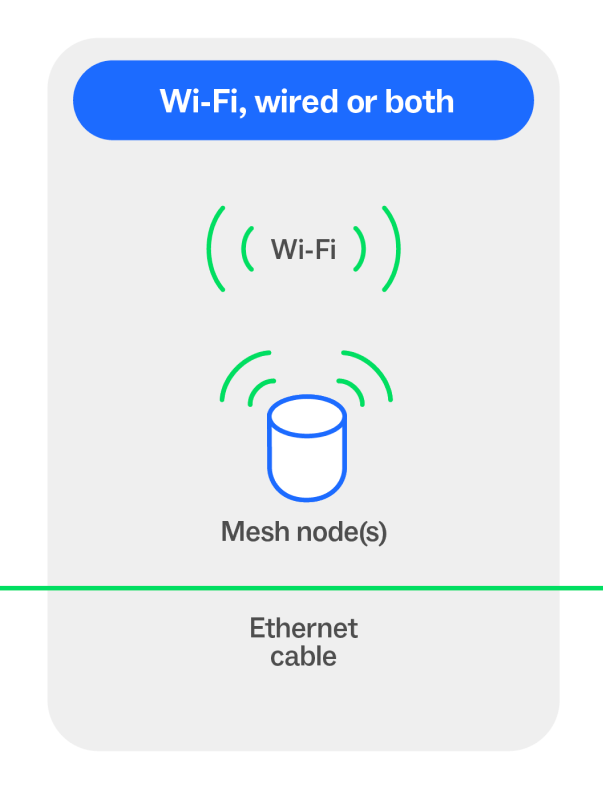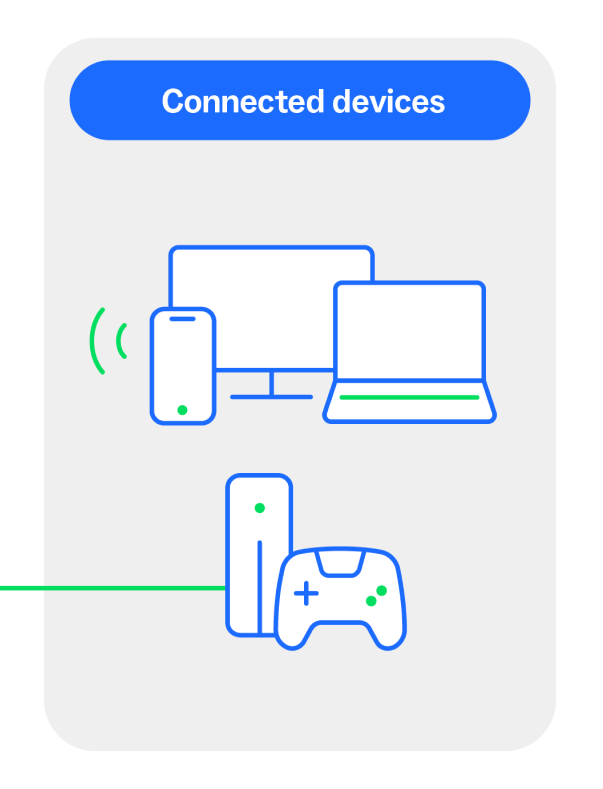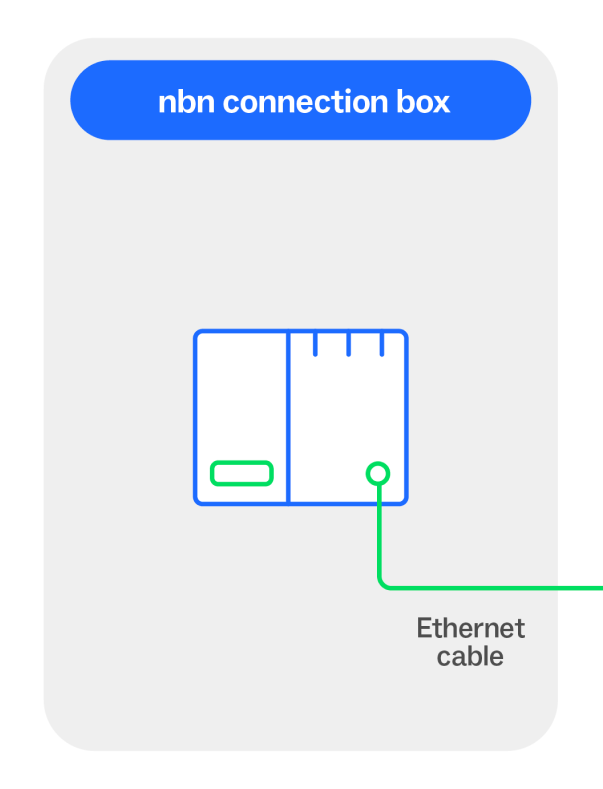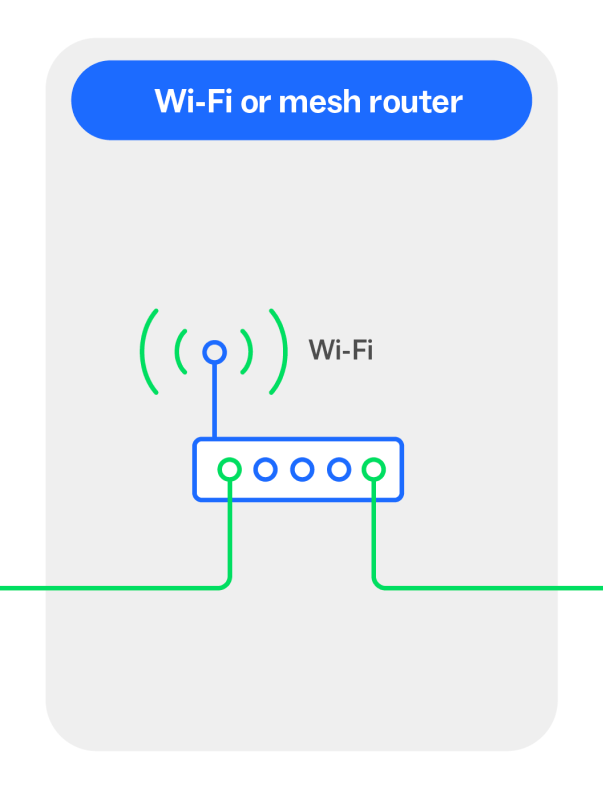Finding the best connection for you
Whether you want mobility, convenience or reliable speed, there’s a connection type that will suit your needs. Wireless, wired or a combination of both – let's find the right connection type for you.
Wi-Fi, wired, or both?
Your router can connect to your devices through either wired or wireless connections, giving you the flexibility to roam with Wi-Fi, the dependability of a wired connection, or a combination of both, depending on your needs.
Wi-Fi
A Wi-Fi connection means your connected devices are connected wirelessly via the router’s Wi-Fi signal and aren’t physically plugged in to your Wi-Fi router.
Benefits to a Wi-Fi connection:
- No need for extra wiring
- Convenient connection wherever there is Wi-Fi signal
- Generally sufficient for small properties
However, depending on your home or business’s layout, you may experience lag or drop-outs the further you move away from your router, due to interference from thick walls, appliances, or simply the distance the Wi-Fi signal has to cover.
Wired
A wired connection means using an Ethernet cable, also known as a Local Area Network (LAN) cable, to connect your devices directly to your Wi-Fi router, or adding a wired connection between your mesh network nodes.
Benefits to a wired connection:
- A faster, more stable online experience
- Less interference than Wi-Fi
- Generally a more secure connection with less risk of unauthorised access

Types of cables for a wired connection
There are two types of Ethernet cables you’re likely to come across, both of which can be purchased from tech retailers:
- Shorter cable: Also referred to as a patch cable, these usually come in the box when you buy a new Wi-Fi router, and are often used to connect a device like a smart TV or home computer.
- Structural cable: This is the cable installed in-wall by a registered cabler – it’s made to cover longer distances to help connect two areas of your home or business. New installations should ideally use at least CAT 6 cables, since older cables might not support higher nbn speed tiers.
Plan ahead to help enhance your connectivity
Is your home relatively large, with thick walls and/or multiple levels? Are you planning to integrate more smart home devices, like EV chargers, smart appliances or security cameras, into your home? Having the flexibility to connect devices directly via a wired connection rather than relying solely on Wi-Fi means you can enjoy fast and reliable internet throughout your home, with fewer headaches troubleshooting.
Cabling tips:
- Ask a registered cabler about installing additional Ethernet sockets (or data ports) in areas of your home where there’ll be a lot of internet usage, like lounge rooms, offices, or games rooms.
- Decide where the main or most central area of your premises is – that’s where your Wi-Fi router should go.
- Think about two to three other areas where the internet will be used a lot, like home offices or living rooms, and consider whether you want to have data or Ethernet ports installed there.



